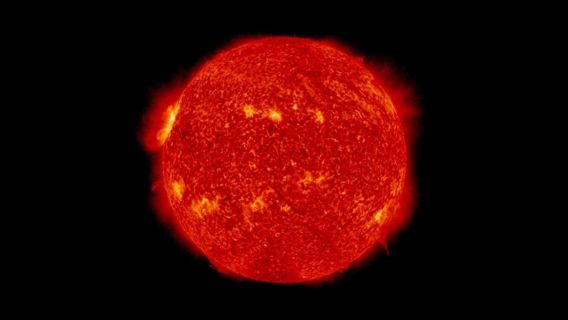
Cosmologists have graphed the developmental course of our Sun and have recognized its end date.
Features
The Sun is overflowing with sun based flares and coronal mass discharges
The Gaia space apparatus has uncovered the past and eventual fate of our sparkling star
As the hydrogen runs out in its center, it will expand into a red monster star
The Sun, which is overflowing with sun oriented flares, coronal mass launches, and sun based storms, is going through its middle age, assessed at 4.57 billion years. The Gaia space apparatus, which has been credited with making the most reliable guide of the universe, has uncovered the past and fate of the sparkling star in the focal point of our Solar System.
The most recent data is pouring from the new information delivered the Gaia shuttle in June this year. The most recent dataset contained data about the characteristic properties of a huge number of stars, which incorporate how hot they are, the way large they, and masses they contain.
Utilizing this information, cosmologists recognized stars of comparable mass and creation as our Sun and found out how our star is turning out to develop from here on out.
Craftsman impression of a few potential transformative pathways for stars of various beginning masses. (Photograph: ESA)
Middle-age in progress
The European Space Agency expressed that with a period of around 4.57 billion years, the Sun is as of now in its agreeable middle age, combining hydrogen into helium and for the most part being fairly steady. As the new sun oriented cycle tops, the Sun last week detonated with 17 coronal mass launches and nine sunspots.
Be that as it may, from now on, as the hydrogen runs out in its center, and changes start in the combination cycle, it will enlarge into a red goliath star, bringing down its surface temperature simultaneously.
Moving
Researchers are keen on finding out precisely the way that this occurs and it really relies on how much mass a star contains and it's synthetic piece. This is where the Gaia information is generally valuable. Orlagh Creevey from Observatoire de la Côte d'Azur, France searched information searching for the most dependable heavenly perceptions that the shuttle could offer and zeroed in on the stars that have surface temperatures of somewhere in the range of 3000K and 10,000K in light of the fact that these are the longest-lived stars in the Galaxy and consequently can uncover the historical backdrop of the Milky Way.
"We needed to have a truly unadulterated example of stars with high accuracy estimations," Orlagh said as they sifted the example to show those stars that had a similar mass and synthetic piece as the Sun as it were.
The fate of our Sun
From information and examination, the scientists presumed that the Sun will arrive at a most extreme temperature at roughly 8 billion years old, then it will chill off and increment in size, turning into a red goliath star. At the age of 1011 billion years, the Sun will arrive at the finish of its life.
"In the event that we don't comprehend our own Sun and there are numerous things we have hardly any familiarity with it how might we hope to see each of different stars that make up our superb world," Orlagh said in a proclamation. The European Space Agency said that the Sun will arrive at the finish of its life when it at last turns into a faint white midget.
0 comments
Be the first to comment!
This post is waiting for your feedback.
Share your thoughts and join the conversation.
